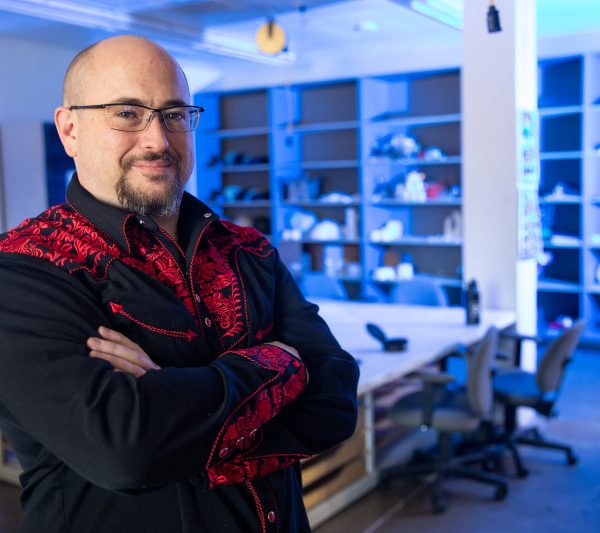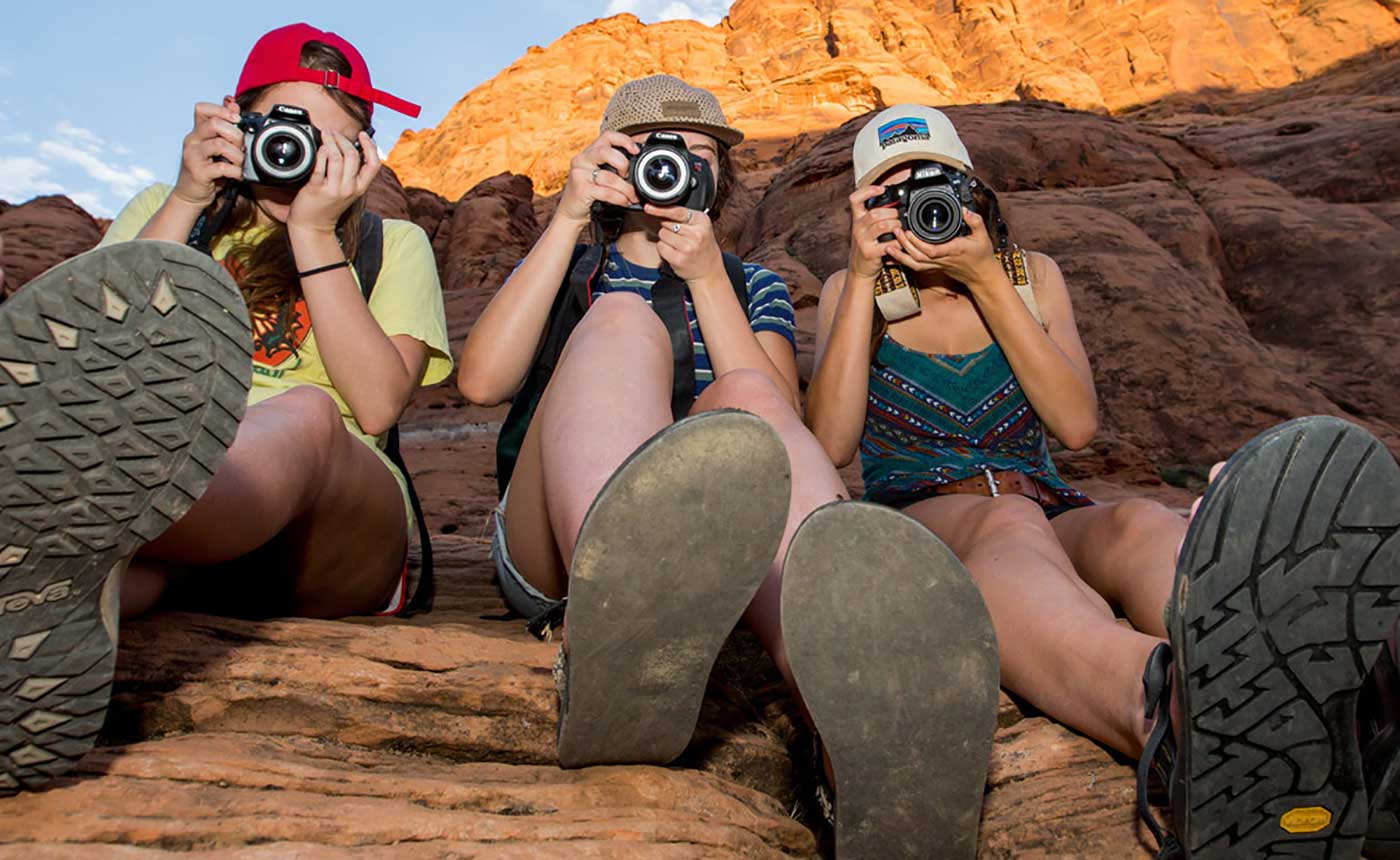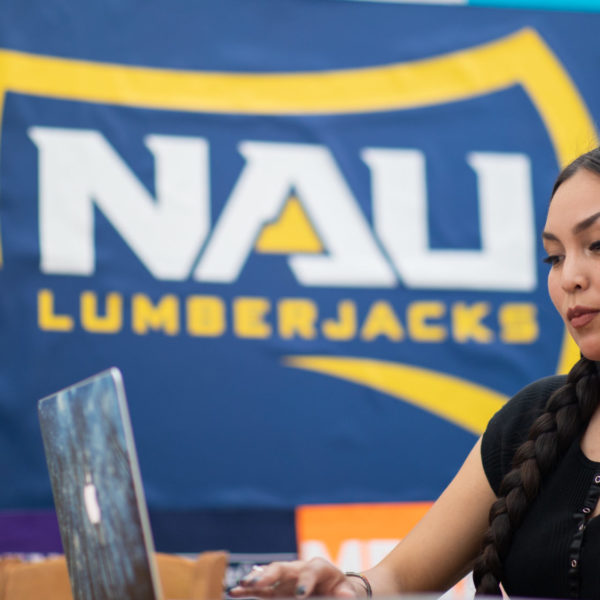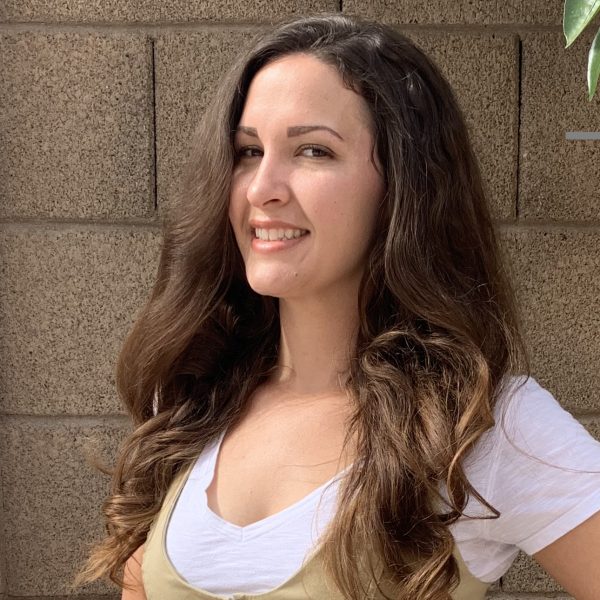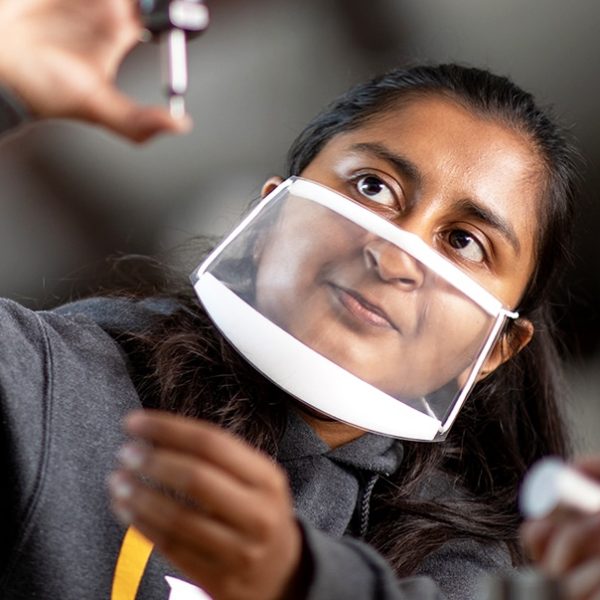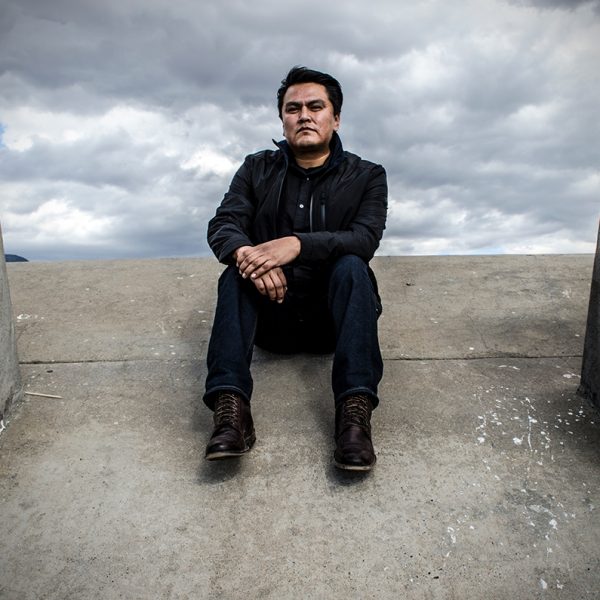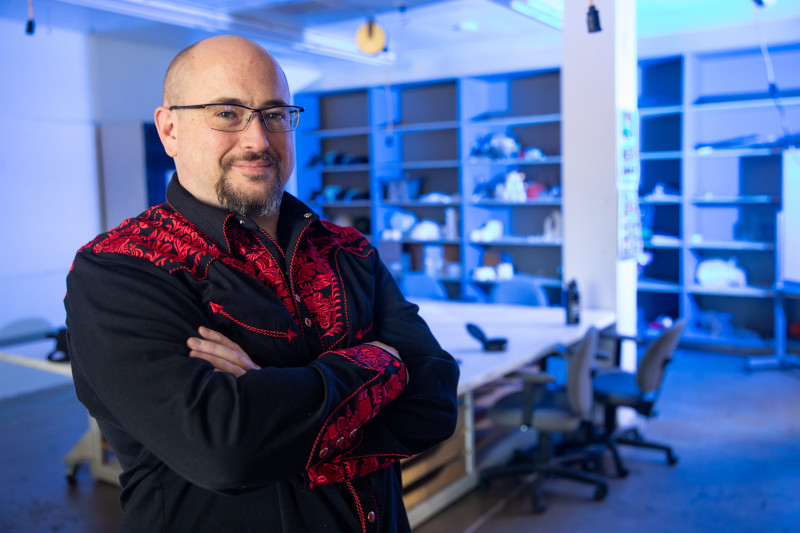
At the boundary of art and science, David Winslow Van Ness makes unexpected connections.
One summer day in 2018, Van Ness was taking scans of human skulls when his phone rang. A lifelong artist and Assistant Professor in NAU’s School of Art, David is known as the “power user” of the 3D printer in Cline Library’s MakerLab. He says the librarians often accuse him of trying to break the machines.
When he picked up his phone, the caller requested urgent assistance, aware of Van Ness’ reputation. There had been an accident. A tortoise was in trouble.
Daisy, the tortoise, had come into the care of a local veterinary clinic after she survived a traffic collision that left her shell broken open in two places. The veterinarian bandaged the shell but needed a more permanent solution. In lieu of expensive prosthetics, the vet looked to Van Ness and the magic of 3D printing.
After some trial and error, Van Ness crafted two biodegradable, corn-based plastic (PLA) implants that would make the tortoise whole. Then he did it again. In a moment of kismet, while he was fixing up Daisy, the pet hospital received a second tortoise a puppy had gnawed on. So, Van Ness fixed this second tortoise too—all in a day’s work.
Spontaneously fixing tortoise shells is mundane compared to some of the projects in Van Ness’ portfolio. He is a founder and co-coordinator of NAU’s New Media Art program. His previous works include Beethoven Protein, a protein synthesized from zebrafish DNA and data derived from Beethoven’s Pathétique. Another piece, Biological Self Portrait, is a “sculpture” based on Van Ness’ social media and Fitbit data; it incorporates a vial of stem cells growing on a plastic model. Tortoise shells? Pretty straightforward by comparison.
A lot of Van Ness’ work revolves around data-driven mingling of art and science. He came by these interests honestly.
Varying perspectives
“My father worked with Brownian mathematics to create fractals, but he always wanted to be a painter and a sculptor,” he said. “My mom’s a computer science senior lecturer. When I was a kid, it was math, science, art.”
While art and science are historically comfortable bedfellows, Van Ness’ art has often pushed the boundary of this relationship by inviting computers to take a more active role in the creative process. His work includes “glitch art,” a modality that takes glitches, errors, and artifacts within computer software and incorporates them into the artwork. One such piece, Glitched Trophy, was made by manipulating the 3D scan of a deer skull to create a sculpture that is both alien and familiar: animal augmented with inorganic angles.
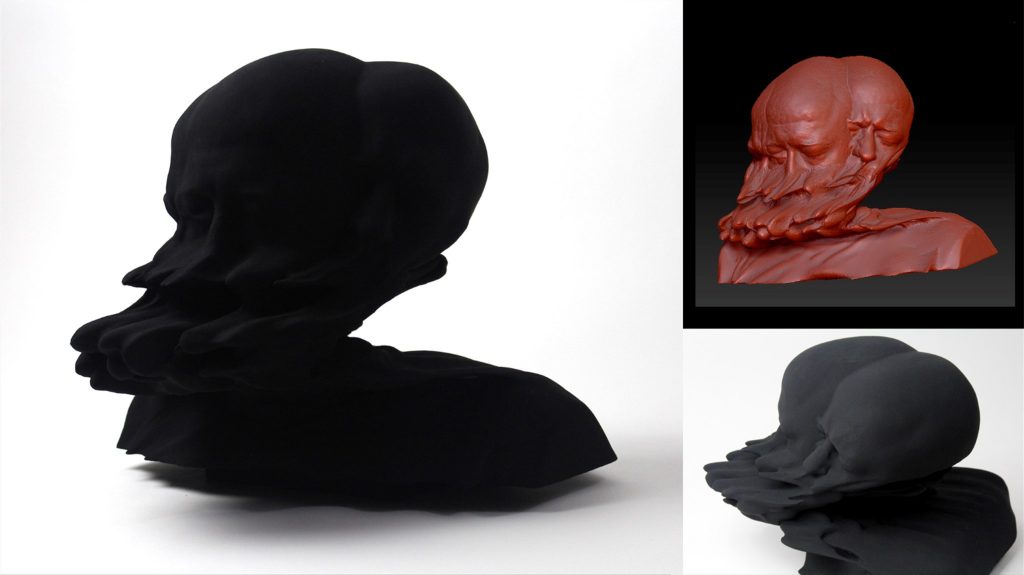
“Over the years, I saw it as deterioration, edit, a collaboration with the computer,” he said. “I think the aesthetics and the look of it has gotten me into this idea of corrosion, distortion, edit.”
Corrosion and distortion feature prominently in his piece Robert E. Lee, a 3D print of a New Orleans statue combined with ten years of hate crime data and coated with a rusty iron patina. The same can be said for Anxiety, a kind of self-portrait that Van Ness made from taking 3D scans of his head then reducing a quarter of the data by 0.25 to reflect the one in four Americans who face mental health issues. Van Ness does not shy away from using his art to reflect societal problems in eye-catching ways.
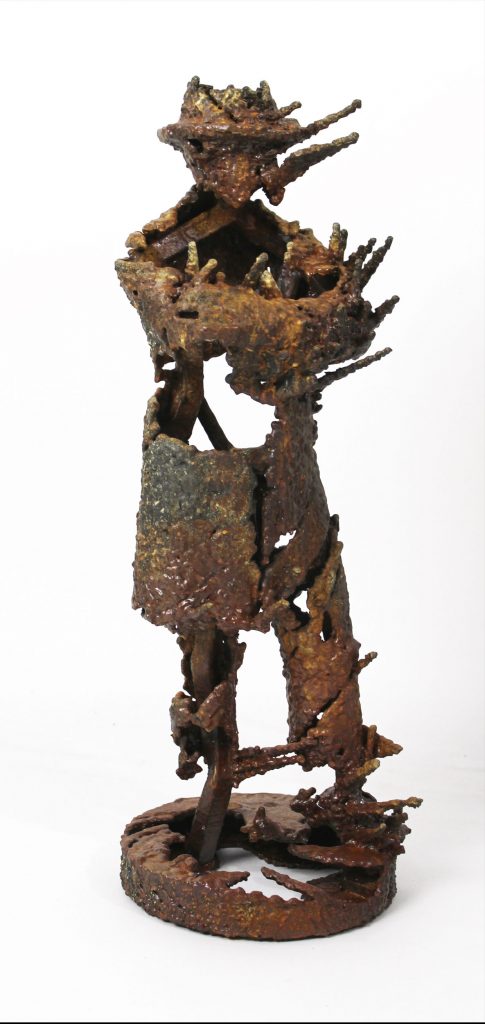
“I think artists have a very keen ability to combine. We take things from different areas, and we’re very good at bringing those together,” he said. “We can come in and give a perspective that maybe isn’t normally considered.”
The pursuit of a new perspective, collaboration, or the combination of existing perspectives is key to Van Ness.
“When I taught an innovation class over at Boundaryless, I gave my students this research paper that talked about how projects that include more diverse people end up being more cited, being more successful,” he said. “I’ve always had this idea that if you can get people together from different points of view, you’ll have more success.”
Bringing people together is a focus of Van Ness’ latest project, which is set to exhibit in 2022 at the Ro2 Art Gallery in Dallas. The exhibit will address mental health in full, from anxiety and depression to pleasure and joy. It will include self-portraits, a giant purple cat, and, naturally, a huggable statue. Van Ness’ motivation for this new exhibit comes from his personal revelations over the last few years.
“I thought I was this massive introvert. I thought I had this pandemic down. I was like, this is going to be fine. I’m a super introvert. I can handle this,” he said. “Oh, hell no. I discovered that I’m actually very soulful and very needing of interaction and connectivity. I think, within something like an installation or performance, coming together and having a shared experience is really important.”
Whether it be the gaps separating people, arts, and sciences—or the fragments of tortoise shell—Van Ness is poised to bridge, blend, combine, and distort them in efforts to make this world a little closer.
“I’m an object maker. When it comes down to it, I am still a sculptor. No matter how digitally or technologically advanced I get, I still come to it as a builder,” he said. “There’s a part of me that likes to build things—and build things that are going to be whole.”

